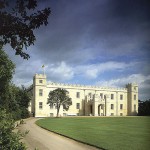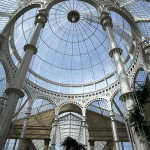English Heritage.
These are the most interesting of a number of historic buildings and museums to be found in Yarmouth’s Historic South Quay area. There were once many row houses here, but most have been removed by war and slum clearance. Two surviving examples have been restored and one (also known as the Old Merchant’s House) fitted out as it was in the 1870’s, the other (no.111) as it was in 1942.
I found the contents and the explanatory displays most interesting.
Also worth a look is the medieval town wall, much of which still exists to its original height – and it’s free to view.
Paignton-Kingswear steam railway, Devon
Unlike most heritage steam railways, this line is promoted as part of an integrated tourist transport system, and not as a destination in itself. The line runs from Paignton to Kingswear, running briefly along the sea coast before cutting acros the peninsula and running some way alongside the Dart estuary before terminating at Kingswear. It connects with First Great Western trains at Paignton, with a ferry at Kingswear, and is also offered as part of a train-boat-bus circular tour starting at Paignton, and other permutations of train and boat.
On their website they claim that “This is one of the finest heritage steam railway journeys anywhere in Europe.” It’s not bad, but having travelled on both, and not being seduced by the romance of steam travel, I can point out that the First Great Western line served by diesel railcars from Exeter to Paignton is longer, has a more spectacular coastal route, and is (with a cheap day return) cheaper.
I’d recommend using the steam railway as part of a touristy day out. There are old places to look at in Dartmouth, including a small castle, and a river trip up to Totnes is one of the best river trips around.
Dingles Fairground Heritage centre, Devon
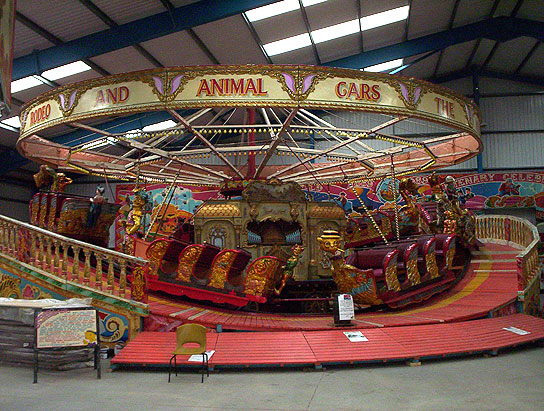
When I visited it in 2007 there were some stationary engines in steam, and other steam exhibits. Most exhibits were to do with fairgrounds, and included vehicles, some of them very ancient, sideshow displays, and, in a large barnlike hall, several complete fairground rides. It was quite interesting.
Today it seems they are offering more of the same, including working rides.
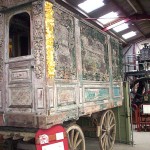
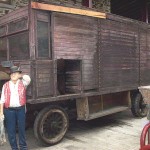
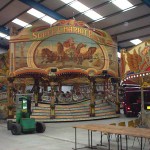
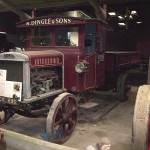
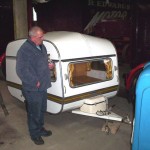
RNPS Museum, Lowestoft, Suffolk
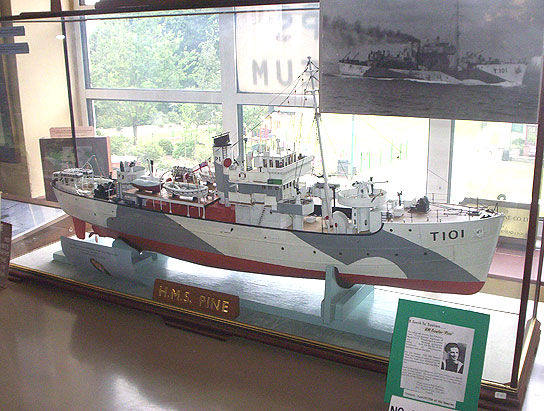
Today, the RNPS Association has its museum in rooms in one of the few surviving buildings of the base at Sparrows Nest, Lowestoft. There are two museum rooms, one on the first floor, the other at ground level at the back. They have various exhibits and mementoes including models of some of the small ships, and many photographs. There are some research materials. The ship models were the most photogenic items on display 🙂
When I visited, I was kindly received, and had a good look round the main room, and also the one at the back, which they unlocked for me. I spotted a picture of one of Dad’s armed trawlers, and they made a copy of it on the spot. They couldn’t shed much light on what Dad’s boats had been doing in the war (such information is very scanty today).
Admission to the Museum is free and it is generally open throughout the year on Monday, Wednesday and Friday mornings until noon, subject to volunteer availability.
If you have come a long way you might want to note other things in the area that shouldn’t be missed: the sea wall and sea a few hundred yards sea-ward from the Museum, Roman fort at Burgh Castle, Great Yarmouth town wall, Great Yarmouth Row Houses.
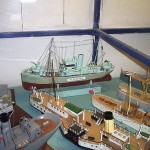
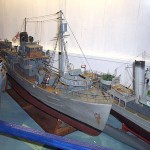
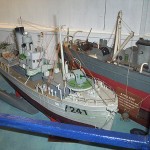
Goonhilly Satellite Earth Station, Cornwall

Until Easter 2010 the site had a visitor centre inside which the Connected Earth gallery told the history of satellite communications. There were many other interactive exhibits, a cafe, a shop and one of Britain’s fastest cybercafés (a one gigabit pipe and a theoretical maximum speed per iMac of 100 Mbit). There were also tours around the main BT site and into the heart of Arthur.
I visited the visitor centre while it was open in 2007, and found it quite interesting. I looked at the exhibits, climbed to the viewing gallery, and looked at my website via the cybercafe. The high point was a bus tour around the site, which allowed visitors to get a closer look at some of the monster dishes. What was a let-down was that some of the dishes were online and receiving signals, and we weren’t allowed to see any of it. It was like your friend asks you round to see his new satellite and Freeview, and he shows you his elliptical dish and spiky aerial. You’d be under-impressed, wouldn’t you?
On 11 Jan 2011 it was announced that parts of the site are changing hands, and there are also plans to upgrade the former visitor centre into “an outreach centre promoting space and space science for visitors, including local residents and schools”.
As with privately owned great houses, this may have been a case of “visit it while you have the chance”, but you can hope.
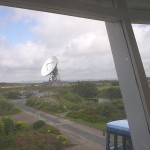
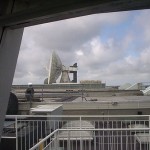
Cadbury Castle, Devon
This Iron Age hill fort site is near Furzdon House (see separate entry) and the village of Cadbury.
I would have liked to walk up to it, but on my first visit to the area it was not obvious where the preferred access was. There is a signed footpath starting from the village lane, about half a mile down from the A3072. Also, the satellite view shows what looks like a farm vehicle track running from a field on the A3072 up to the top, which is marked by a circle of trees.
The second time around, my sister didn’t care to walk up it in the hot sun:-)
Furzdon House, Cadbury, Devon
The house sits on rising land above a minor road. The Georgian frontage has two projecting wings and a central colonade. A dwelling has been on the site for 750 years, the last major rebuild being in the 18th century and the last major alteration being the addition of the library wing in 1815. The Coach Hall adjacent to the house serves as ticket office and tea room when the house is opened to the public. The estate is quite large and includes the Cadbury Castle hill-fort nearby (see separate entry)
When my sister and I visited the house, we were welcomed by Catriona Furzdon, the lady of the house, at the Coach Hall. We had a look at the gardens surrounding the house before joining a guided tour of the house interior. The house has some quite interesting rooms filled with old furniture, the details being ably narrated by our guide. The gardens around the house have various sub-sections and at the rear they look down on the older parts of the house. Behined the house are terraced beds of herbs and roses, and a thatched round house. Below the house and across the road is the Meadow Garden, which has trees and a pond. We enjoyed our visit here, as we liked the house and garden and had a warm welcome. We enjoyed the tea and cake too.
http://www.fursdon.co.uk
Althorp, Northants.
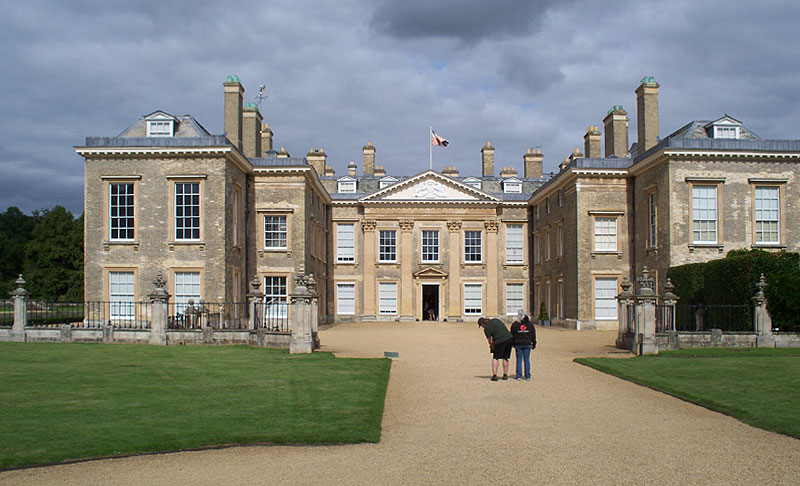 Private, HHA
Private, HHA
At Althorp, a great Georgian palace is surrounded by a wide park and gardens, and supported by some impressive out-buildings. Inside are collections of paintings and treasures, and outside, pathways lead the visitor around a lake set among flowers and plantings of trees. The gardens date from the 1860’s. The wider estate has 14,000 acres of countryside under management in three counties. Althorp has been the home of the Spencer family for 500 years.
The house is clad in what looks, even when one gets up close and touches it, like pale brick, but is in fact a rare system of engineered tiling designed to look like brickwork. The Spencer family has assembled an impressive collection of portrait art including several pieces painted by the Flemish master Anthony van Dyck.
When I visited in 2010, part of the house was clad in self-supporting scaffolding for a major external restoration project, so one could see at once where one’s entrance money was going. I opted to see the upstairs rooms as well (then an optional extra). “Day including Upstairs” tickets permitted access to the upstairs rooms including the five state bedrooms, Great Room, Chapel and the magnificent long Picture Gallery as well as what was included within the Day ticket. As it turns out, much of the more interesting stuff is upstairs. It’s not clear why ‘upstairs’ should be an optional extra except that, as is often the case, there is no provision for disabled access.
Outside, I walked around the oval lake, which makes a pleasant walk. The pavilion at the far end commemorates the late Diana, Princess of Wales. The italianate Stables were clearly built to impress, as well as housing up to 100 horses. The former Stables block, built around a square yard, now contains various amenities.
Althorp has a short visiting season each year in July-August. A discount is offered for English Heritage members, so remember to ask for it.
Revisited Aug 2023. House tickets now all include upstairs. Visitor parking is in a field opposite the West Gate public entrance. Disabled parking is next to the stable block, with entry via the power-operated gates, while able-bodied visitors have a half-mile walk. The walled garden is a recent creation.
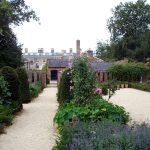
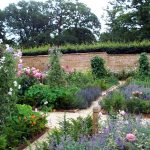
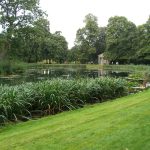

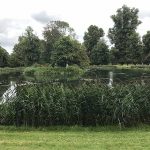
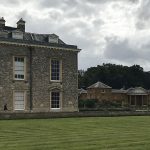
Sywell Aviation Museum, Northants.
The Museum aims to preserve the history of Sywell Aerodrome and Northamptonshire’s rich aviation heritage from the early days of aviation to the Second World War and beyond. It is housed in linked Nissen huts adjacent to the still-operational Sywell Aerodrome.
The Museum commemorates, with aircraft remains, a number of crashes which occurred in the Northants area during WWII. There are a variety of other exhibits including cockpit sections.
This is an interesting visit for the history or aviation enthusiast. Suggested visit time: around two hours.
Syon Park, London
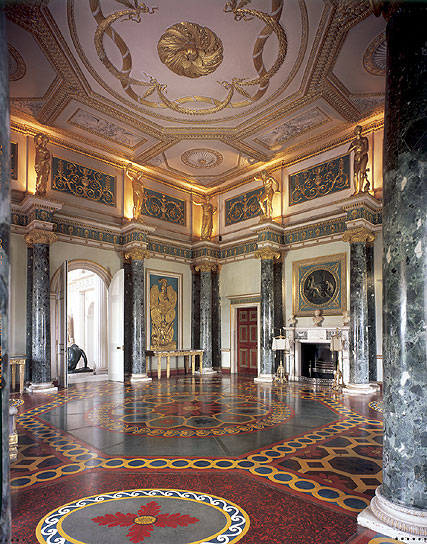
Despite its expansive setting, the house, vaguely reminiscent of a toy-box white fort with ornamental crenellations on top, is not particularly attractive. Inside, however, it’s a different matter. The main entrance opens into Adam’s impressive Roman-inspired hall, all monochrome stucco with black and white checkered flooring. Next is the Ante-room, still Roman but a riot of colour, with a famous scagliola floor, black marble columns, gilded statues and elaborate ceiling. An inconspicuous doorway in the outer corner leads down to viewable rooms in the basement. Next is the State Dining Room, all white and gold, with statuary, bare of any textiles that might retain the smell of food. The Red Drawing Room, besides scarlet silk-hung walls, has a remarkable coved ceiling painted with 239 medallions, and portraits of the Stuart royal family. In the 136ft. Long Gallery, there is elaborate pale plasterwork on the walls and ceiling. When I saw it, the room retained ancient grime but some sampled areas had been cleaned. One visits more fine rooms with more recent interiors, before reaching the main staircase where one can ascend to visit some interesting bedrooms (around to the left at the top of the stairs) passing a collection of portraits IIRC. Before leaving the house one can enter the attractive central courtyard around which one has just walked. In the basement are structural relics of the religious building of conjectural size which once stood on the site.
Outside, one can visit the Great Conservatory, an unique structure of glass and metal, with a dome topping a central block, and curving wings, resembling a great palace, or maybe St Peter’s in Rome. It’s under-used for plants today, either because the expense of heating it would be hideous, or because it makes a promising function room. There are 200 acres of formal garden and informal parkland to explore, and the interested visitor con find bits of the old Syon Park farm embedded in the garden centre and café areas.
It’s possible to reach Syon Park by train, if you don’t mind a train/bus interchange or a tedious walk. Now, visitors will have to avoid confusing Syon Park with the London Syon Park luxury hotel, which opened in the park in early 2011. (pics from Syon Park official download).
